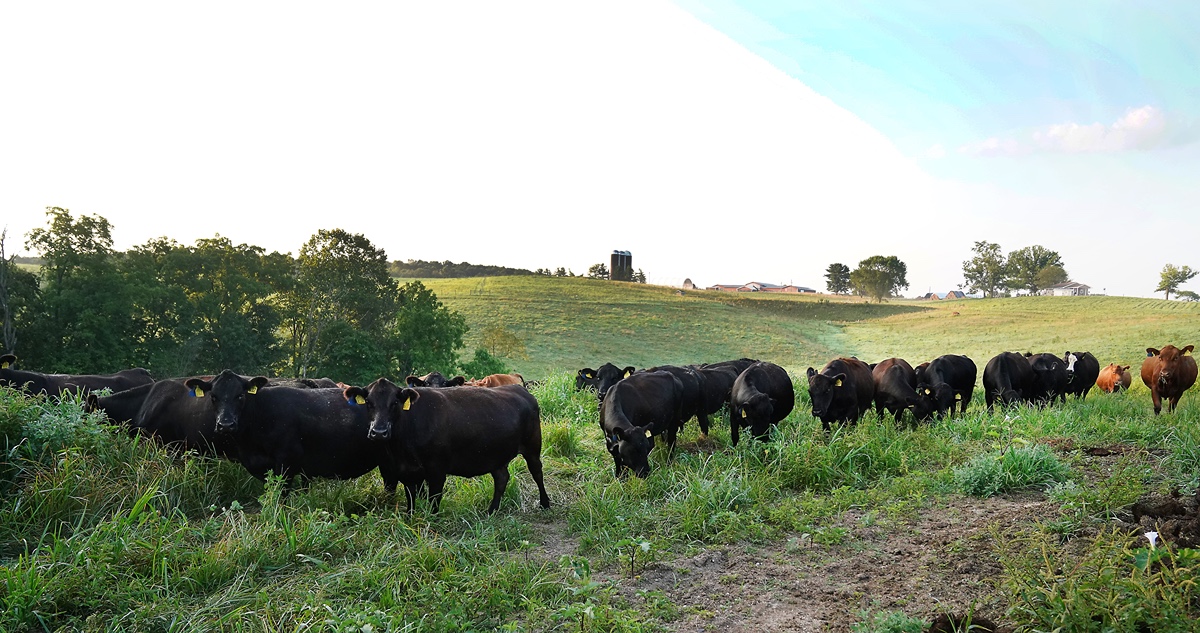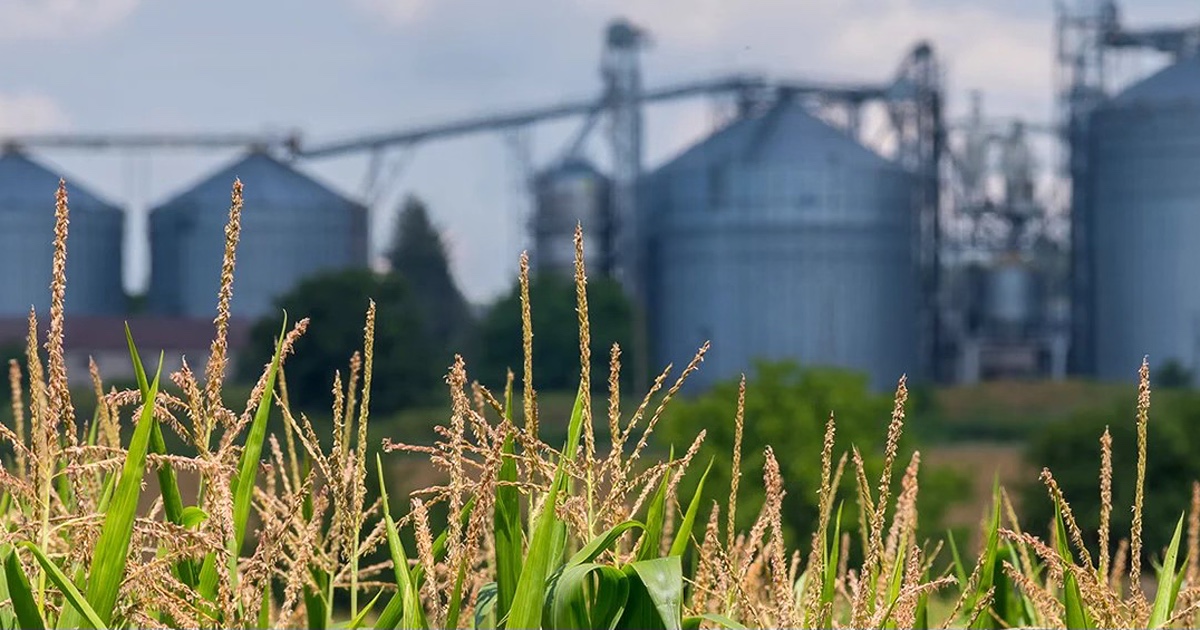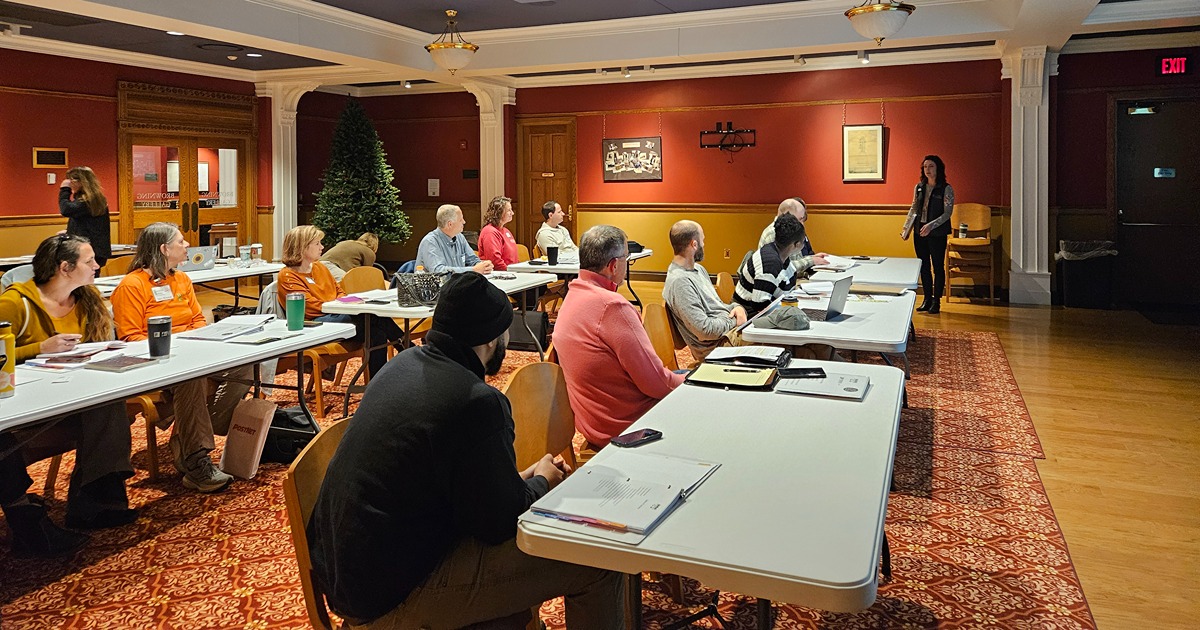Food products from animals with heritable genetic modifications potential boon to producers, consumers and animals
 “Heritable Genetic Modification in Food Animals,” a new report from the National Academies of Sciences, Engineering and Medicine, was written by a committee of experts, including William Muir, professor emeritus of animal sciences at Purdue University. (Purdue Agricultural Communications)
“Heritable Genetic Modification in Food Animals,” a new report from the National Academies of Sciences, Engineering and Medicine, was written by a committee of experts, including William Muir, professor emeritus of animal sciences at Purdue University. (Purdue Agricultural Communications) WEST LAFAYETTE, Ind. — Farmers have been improving the genetics of their animals for thousands of years through selective breeding. Wild boars were bred until they lost their tusks and gained fattier meat. Breeding cattle were chosen for favorable traits like muscularity or high milk production.
At the same time, advances in genomics and biotechnology have allowed scientists to make precise changes to animal DNA, creating genetic modifications that can be inherited.
A new report from the National Academies of Sciences, Engineering and Medicine looks at these new technologies, evaluates potential risks and makes recommendations for the future. The report, “Heritable Genetic Modification in Food Animals,” was written by a committee of experts, including William Muir, professor emeritus of animal sciences at Purdue University.
“It’s a potential game changer,” Muir said of the new generation of technology.
Technologies that transfer DNA from one animal to another (transgenics) have been used for several decades, but the debut of CRISPR in 2012 brought the science to a new level. CRISPR (clustered regularly interspaced short palindromic repeats) is a tool that allows researchers to make precise changes to DNA. These changes can be “knock-ins” — additions of new alleles for favorable traits — or “knockouts,” the removal of undesirable alleles. When changes are made to an animal’s germ line, or the cells that develop into sperm and eggs, they are called heritable genetic modifications (HGMs).
“The main advance in recent technology is that, with classic transgenics, the genes were inserted at random — we had no control over where they went, so they could have unknown consequences,” Muir said. “Now, with CRISPR, we can insert new genes in areas exactly where we want them.”
Though CRISPR-modified plants are now ubiquitous in American agriculture, the introduction of similarly modified animals has been slowed by a complex regulatory process. Only a few genetically modified animals have been FDA approved for human consumption. One is AquAdvantage salmon, an Atlantic salmon engineered to grow much more quickly. The salmon was approved for sale by the FDA in 2015, after years of testing. But its journey to market was hardly smooth — dubbed “frankenfish” by opponents, it was subject to mandatory GMO labeling. Though the controversy eventually died down, it likely slowed companies’ eagerness to pursue similar innovations, Muir said.
The only CRISPR-edited animal approved for consumption is a type of beef cattle edited to have short hair, which makes them more heat tolerant. The edited cattle were FDA approved in 2022.
A second CRISPR-modified animal, the GalSafe pig, is close to approval. The CRISPR-modified pig doesn’t produce alpha-galactosides, sugar molecules that can cause allergic reactions in people with alpha-gal syndrome, an acquired meat allergy usually caused by a tick bite. The GalSafe pig originally was bred with the hopes of one day providing organs and tissues for transplantation, since alpha-gal sugars may be a cause of organ rejection.
The benefits of HGMs are not limited to producers and consumers, Muir said. Modifications can also benefit animals. Muir gives the example of laying chickens — because only females lay eggs, male chicks are culled after birth. The alternative is either raising the male chicks for meat or using technology to determine sex while the chicks are still embryos in the egg (in-ovo sexing). Current in-ovo sexing technologies involve either making a small hole in the egg and testing the fluid or scanning the egg for feather color, which only works in chicken breeds where males and females are different colors.
Gene editing could offer a more efficient solution. Chickens have been modified so that male embryos produce a color marker that can be seen through the eggshell (awaiting approval).
“We can pass eggs under a high-speed scanning optical microscope to see if an egg has that color spot, and if it does, we know, OK, it’s male, and we can cull it,” Muir said.
Animals could also be modified to be resistant to diseases, Muir said, which would benefit animals and humans alike. Pigs edited to resist porcine reproductive and respiratory syndrome (PRRS) are already approved in Brazil and Colombia, and researchers hope they will secure FDA approval for their use in the U.S. this year. PRRS currently costs producers more than half a billion dollars per year, killing nursing piglets and causing reproductive failure in adult females.
The anti-PRRS gene editing is “a tremendous benefit for the swine industry and has no risk to humans,” Muir said.
Likewise, chickens could potentially be made resistant to avian influenza, which has cost producers billions of dollars and created fears of a possible human pandemic.
“We really want to get birds that have innate resistance so we can get ahead of the disease,” Muir said. “Disease resistance is one of the great opportunities of this technology.”
A more streamlined FDA approval process is needed to secure these advances, Muir said. In the current environment, the expense and time needed for approval scares off investors, meaning many potentially beneficial products don’t make it out of the lab.
“There needs to be a quicker way of getting these into the market,” Muir said.
To this end, one of the report’s recommendations was for HGM products to be evaluated based on how the product’s phenotype — its observable characteristics — compare to existing food products that are known to be safe.
Other recommendations included creating a process to evaluate outcomes of FDA applications, supporting discussions with animal welfare stakeholders and investing in more research to evaluate nutritional composition of HGM foods.
Muir also hopes the report will help consumers understand how carefully and rigorously HGM products are tested for safety.
“We want people to know this is a safe technology,” he said. “We have many, many layers of often-redundant safety measures, so the public should feel very confident that when these edited animals are commercialized, they’ve been very well-vetted.”
About Purdue Agriculture
Purdue University’s College of Agriculture is one of the world’s leading colleges of agricultural, food, life and natural resource sciences. The college is committed to preparing students to make a difference in whatever careers they pursue; stretching the frontiers of science to discover solutions to some of our most pressing global, regional and local challenges; and, through Purdue Extension and other engagement programs, educating the people of Indiana, the nation and the world to improve their lives and livelihoods. To learn more about Purdue Agriculture, visit this site.
About Purdue University
Purdue University is a public research university leading with excellence at scale. Ranked among top 10 public universities in the United States, Purdue discovers, disseminates and deploys knowledge with a quality and at a scale second to none. More than 106,000 students study at Purdue across multiple campuses, locations and modalities, including more than 57,000 at our main campus locations in West Lafayette and Indianapolis. Committed to affordability and accessibility, Purdue’s main campus has frozen tuition 14 years in a row. See how Purdue never stops in the persistent pursuit of the next giant leap — including its integrated, comprehensive Indianapolis urban expansion; the Mitch Daniels School of Business; Purdue Computes; and the One Health initiative — at https://www.purdue.edu/president/strategic-initiatives.
Writer: Emily Matchar
Media contact: Devyn Ashlea Raver, draver@purdue.edu
Sources: William Muir, bmuir@purdue.edu
Agricultural Communications: Maureen Manier, mmanier@purdue.edu, 765-494-8415
This research is a part of Purdue’s presidential One Health initiative, which involves research at the intersection of human, animal and plant health and well-being.




